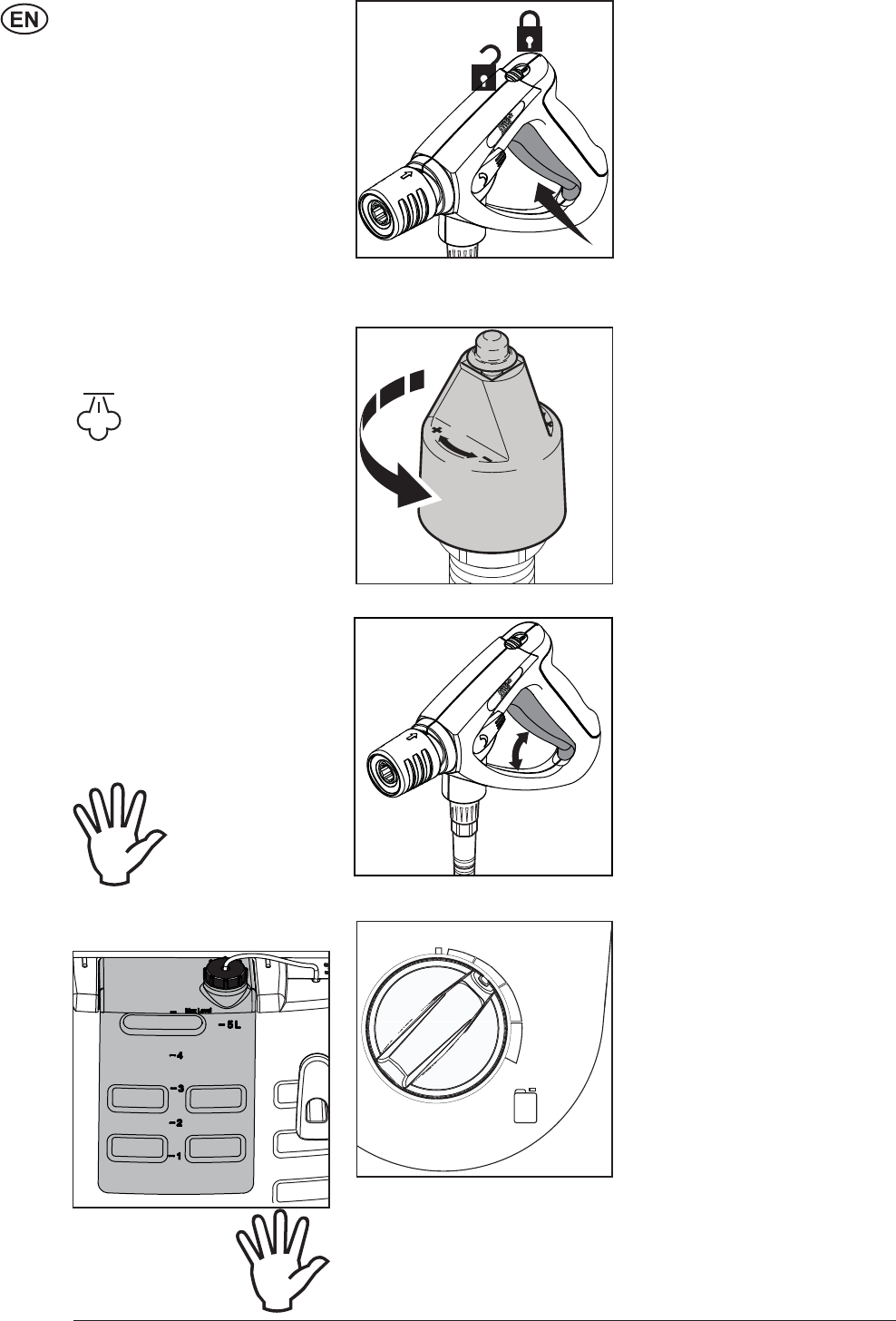
8
1)
Options / model variants
Original instruction
NEPTUNE 1, NEPTUNE 2
NEPTUNE 2 Special
1. Set the desired concentra-
tion of cleansing agent at the
cleansing agent dosing facil-
ity.
2. Spray the object to be
cleaned.
3. Allow the cleaning agent to
work, depending on the de-
gree of soiling. Then rinse off
with the high pressure spray
jet.
CAUTION!
Never allow cleaning agent to dry on the
surface to be cleaned. The surface may be
damaged.
For special applications (e.g. disinfection)
the exact detergent concentration has to
be determined by measuring cup. For wa-
ter throughput of the machine see chapter
9.4 technical data.
4.3 Pressure regulation (Ergo
Vario Press Gun)
1)
1. Operate the Vario trigger in
order to vary the water flow
and thereby the pressure.
2. Push the trigger forwards to
obtain full pressure and flow.
4.4 Using cleaning agents
1. Replace the standard noz-
zle with the steam spray
nozzle (See catalogue for
accessories).
2. Open cover.
3. Turn the twist grip on the
safety control block com ple-
te ly to the left (anti clock wise
direction).
4. Turn the main switch into
position ‘Hot Water’.
5. Select temperature (over
100°C).
BAR
4.2.3 Steam operation (over
100°C)
1)
Beware of hot water and
steam discharge up to
150°C when operating in
steam stage.
0
2%
1%
3%
4%
For safety reasons, never tie back or
wedge open the trigger of the spray gun in
open position during operation. The trigger
must be free to close when released, thus
interrupting the flow of the water.
4.2.2 Hot water operation (up
to 100°C)
IMPORTANT!
In the case of appliances with a
hose reel:
In hot water mode, unwind the
high-pressure hose fully from the
hose reel, as otherwise the hose
reel may become warped due to
the effects of the heat.
1. Move main switch into the
position 'Hot Water' (B) and
select the required tempera-
ture on the temperature con-
trol
2. Unlock the spray gun and ac-
tuate it
The burner switches on.
In case of interruptions in work:
Also be sure to insert the safety
catch even during short interrup-
tions in work (see Fig. in section
6.1)


















